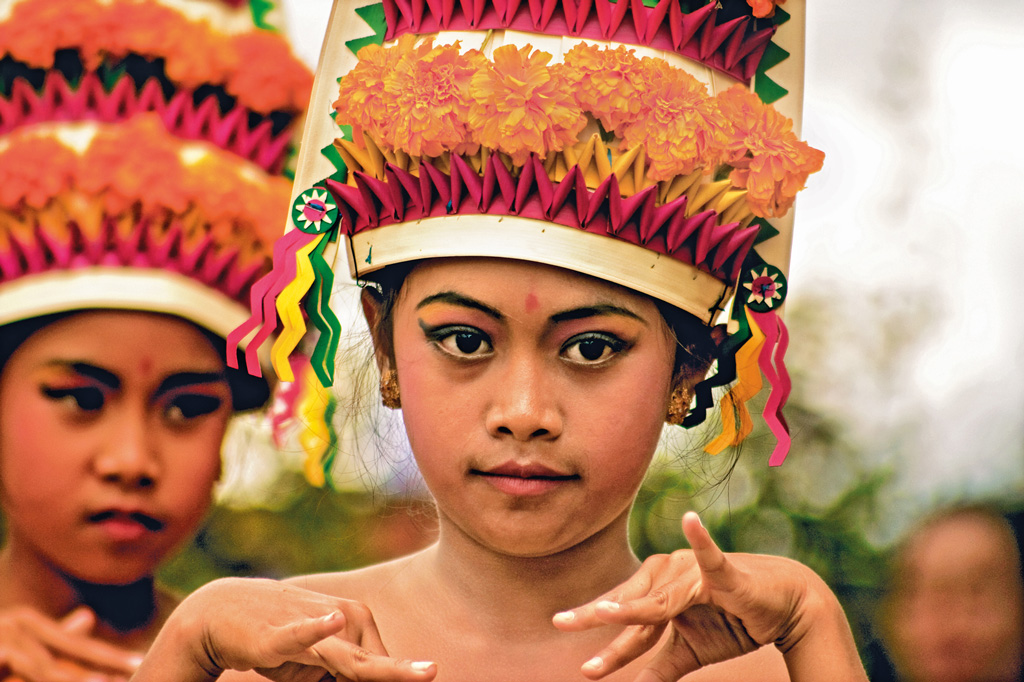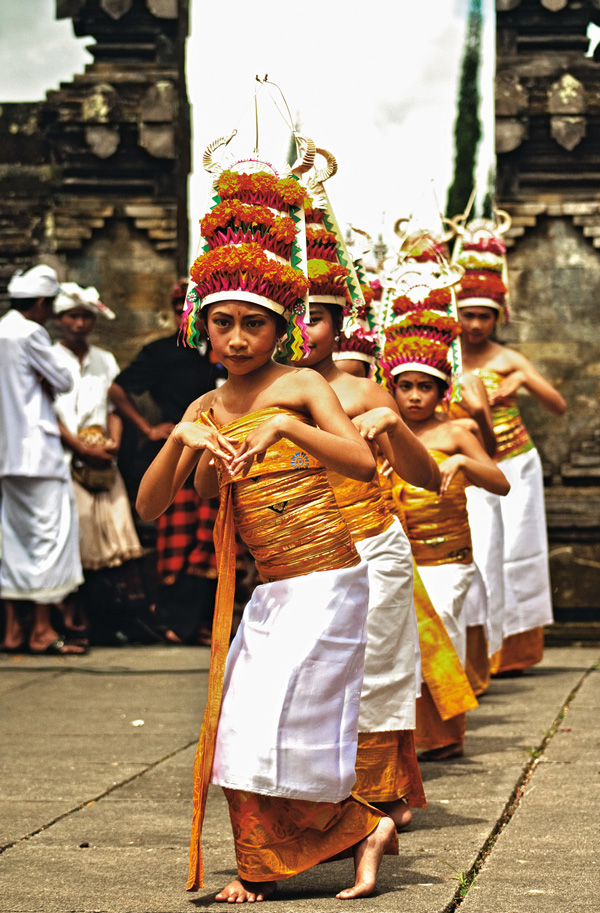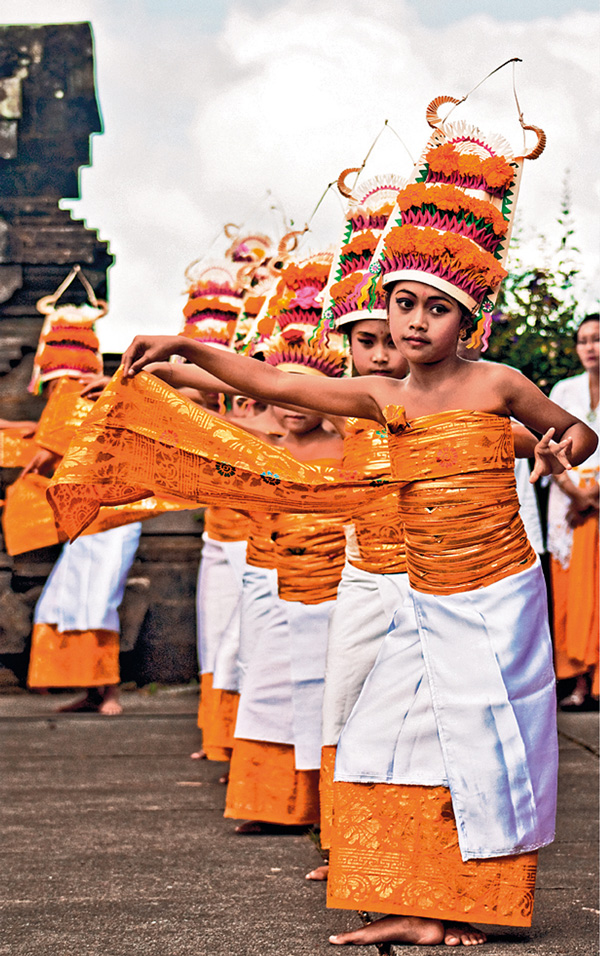
So much more than just a form of art, traditional dances in Bali are a welcoming ritual, performed to mark the start of religious ceremonies or rituals that take place in the temples, to welcome the deities and ancestors that come down to the earth whenever the ceremonies take place and also to show gratitude to the gods for their blessings.
Even though a ceremony starts with dances, before the dances start, the dancers and the accompanying musicians must follow a ritual in which they ask for a blessing from the gods to charm their performance. They are praying for taksu – a compilation of perfect techniques they get through serious study and practice plus the charisma they have been lucky enough to be given. It is said that dancers with taksu can hypnotise and stun the audience when they start swaying their bodies.
Anyway, Rejang is one such dance, a welcoming ritual that can only be performed during a particular holy ceremony such as Betara Turun Kabeh, an annual ceremony at the Besakih Temple, which is considered one of the most sacred and important ceremonies in the religion and culture of Bali.
On the first day of the ceremony, the opening ritual is Rejang Galuh dance, performed by a group of little girls, and followed by the Rejang Renteng, this time enacted by a group of ladies. Only those who are virgins or mothers can perform the Rejang dance, for the dance is conducted to welcome the deities and the holy spirit of the ancestors.
The choreography of this dance is very simple, but the dancers have to be really focused and perform the routines with a clean heart and a solemn soul as the dance is sacred and performed as part of worship for the gods and goddesses, to express gratitude for the blessings and prosperity given. The Rejang Galuh group wears beautiful head accessories made from dried palm leaves, and their little bodies are wrapped in brightly coloured fabric with with golden flower patterns. By contrast, the ladies wear a simple white kebaya dress, white sarong, and a yellow sash around their waists.

The colours of the dancers’ attire represent the gods being worshipped: White is the colour of God Iswara, the ruler of the east where the sun rises, and yellow is the colour of God Mahadeva, the ruler of the west.
There are many types of Rejang, such as Rejang Renteng, Rejang Bengkel, Rejang Ayodpadi, Rejang Galuh, Rejang Dewa, and many more. The attire, the routines, and the sacred props wielded by the dancers during the performance depend on the type of the ceremony, where it is held, and the religious status of the dancers.
For example, Tenganan village in Candidasa, Karangasem regency, has its own type of Rejang dance. There, the dance is divided into four parts, starting with the Rejang Palak, and Rejang Membingin which is then followed by Rejang Makitut. The routines end with the most sacred part, the Rejang Dewa, performed by ladies who have undergone a purification ritual so that they would not be vulnerable to evil forces while they are dancing.
In Tenganan, the Rejang dance is usually performed by a group of girls from ages two to about thirteen, the requirement being that only the virgins can perform the dance in the temple on the day of the holy ceremony. The attire they wear is totally different from the dancers in Besakih. In this village the dancers wear the Tenganan Pageringsingan fabric, the village’s authentic woven fabric, with gold flowers adorning their hair.

Aside from virgins, elderly women above the age of 60 are the ones also permitted to perform the Rejang. They usually dance for the purification ceremony to purge the village of evil spirits, and when calling for the holy spirits to come. The dance is performed in a procession around the village while bearing offerings, and with the traditional gamelan music instruments providing the music. The dancers usually enter a trance-like state when they dance.
In addition to the dance, the orchestra also contributes towards a dance performance, however they can’t go in a different direction. The orchestra, which is called the gamelan, comprises various percussion instruments, xylophones, gongs, and sometimes bamboo flutes. For example, for the Legong dance, where the music and the routine have been set together since the very beginning, the Baris dance where the musicians must follow the movement of the dancers. Of course, there also dances in which the dancers have to follow the rhythm produced by the musicians.






